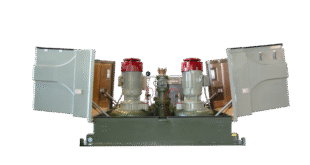This new high performing and climate friendly heating, ventilation and air conditioning (HVAC) system offers commercial building owners in Europe another solution to help achieve sustainability goals.
Model RTAF G delivers capacity up to 1700 kilowatts (kW) which is a benefit for most large commercial and industrial cooling applications that require maximum performance within a limited installation space.
The new model creates a valuable option for customers who want to transition to a next-generation refrigerant while still maintaining or improving their system’s capacity, functionality and efficiency because it uses R-1234ze, a near zero global warming potential (GWP) refrigerant.
The Sintesis portfolio is a range of high efficiency air-cooled chillers for office, industrial and healthcare buildings.
The portfolio is modular and flexible to meet customer needs in Europe as they work to achieve energy efficiency and sustainability targets.
All Sintesis chillers are compliant with all applicable European Union Ecodesign Regulations under the Energy-related Products (ErP) framework Directive 2009/125/EC.
Sintesis RTAF G is part of the Ingersoll Rand EcoWise portfolio of products designed to lower environmental impact with next-generation, low-GWP refrigerants and high-efficiency operation.
 Engineer News Network The ultimate online news and information resource for today’s engineer
Engineer News Network The ultimate online news and information resource for today’s engineer




